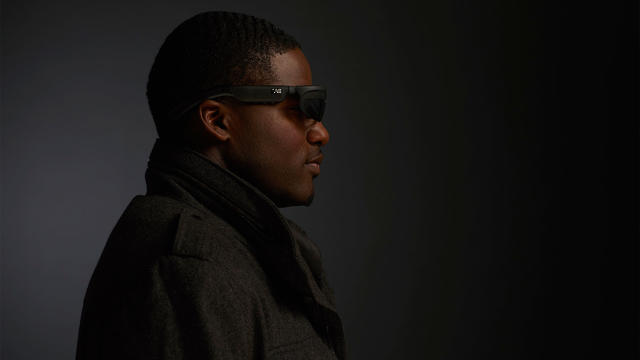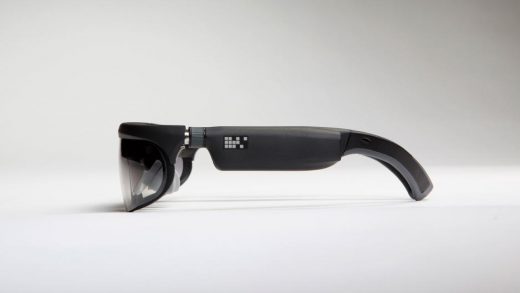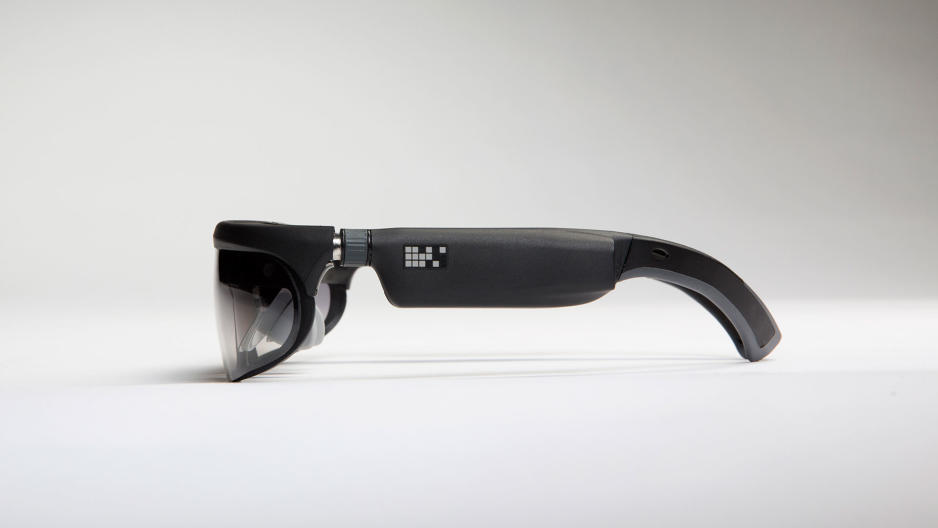ODG’s Next Smart Glasses Bring Powerful Augmented Reality To New Markets
With the arrival of consumer virtual reality, get used to seeing a lot more people wearing headsets that transport them to different worlds. Today, San Francisco-based Osterhaut Design Group (ODG) unveiled its two latest products, the R-8 and R-9 smart glasses, each capable of a wide variety of augmented- and virtual reality functions, displaying high-quality video, and most features offered by any high-end Android tablet.
The former, aimed at early adopters and “light” enterprise companies, costs under $1,000. The latter, targeted at commercial enterprises, will run $1,799. Both use Qualcomm’s latest and most powerful mobile processor, the Snapdragon 835, and each will be available in the second half of 2017.

ODG has been in the smart glasses business for years, and its R-7 system has been adopted by hundreds of companies and is in use across a wide variety of industries, such as health care, automotive, energy and oil and gas, mining, warehousing, aerospace, and others. The company plans to continue selling and supporting the R-7, meaning that for the first time, it will maintain three separate platforms, each focusing on a different target market.
Because each of its glasses offer a unique, high-end experience capable of displaying what appears to be a large HD-quality screen (the size depends on the model), ODG has attracted some impressive investors and partners. In the U.S., 20th Century Fox has invested in the company and is providing content based on its hit films. ODG has also partnered with China Mobile’s MIGU to introduce the devices in China.
ODG is playing a long game, but COO Pete Jameson believes that smart glasses are going to be the next great mobile platform, a natural evolution of devices that have gone from the desktop to our pockets to our hands, and eventually onto our bodies.
Already, we’re seeing the emergence of wearable augmented reality devices like Microsoft’s HoloLens, the Meta 2, and eventually, Magic Leap. But ODG says its already in the market with its devices, and that unlike the others mentioned above, none of the R-7, R-8, or R-9 rely on being physically connected by wires or cables to any other computing devices.

Rather, each of ODG’s smart glasses connect to a mobile phone via Bluetooth LE. That’s a significant differentiator, Jameson said, because it means that the devices can be taken and used anywhere, even in harsh environments or places where being physically tethered to a computer isn’t possible—atop a utility pole, under a truck, in the rain, and so on.
As Nima Shams, ODG’s vice president of head-worn products, explains it, the company’s glasses are built around three pillars: cinema-quality graphics; full integration on the device; and extreme mobility. That’s because, he added, the genesis of ODG was creating devices that could be used by professionals in gritty environments where nothing else would work.
Huge Displays
The R-9, which is meant for the prosumer market, offers the equivalent of a 110-inch HD-quality screen at 10 feet away. That means that, although the device itself weighs under 120 grams, once you strap it on, you’re looking at a very powerful screen that displays sharp graphics, crisp fonts, and is capable of delivering rich video experiences, anything from the latest movies for someone looking for in-flight entertainment to in-depth schematics for a field technician.
That video experience is powered by dual 1080p displays, individually driven to each eye. The R-9 also features two cameras, a 13-megapixel, full 4K HD sensor, as well as a fisheye lens. Together, they make it possible to track the wearer in physical space, meaning that AR and even VR experiences can be rich, with the kind of full 6-degrees of movement capability that devices like HTC’s Vive VR headset offers.
The R-9 also will support add-on modules that will come from both ODG and its partners. They could include enterprise-quality radios, cellular radios (negating the need for a mobile phone), or others.

The R-8, which ODG hopes will break into the high-end consumer market, offers dual 720p screens capable of delivering the equivalent of a 90-inch screen at 10 feet. It also has a fisheye lens and has dual stereo 1080p cameras. The idea there is that users can launch telepresence calls in 3D, or, perhaps, capture and transmit 3D imagery from one R-8 to another.
Both new devices are being unveiled at CES this week, along with a series of content demos from outside developers. During a Fast Company visit to the company’s offices last week, the demos were still in unfinished form, yet offered a strong impression of what the glasses can do.
ODG is one of the best-funded augmented reality companies in the world, having raised $58 million to build out its smart glasses operation. Though the market is still nascent, it is hoping to be a leader, and to surpass offerings from its rivals, yet conscious that anything that boosts AR’s awareness is good for all, even as many companies vie for the lion’s share of a market that is predicted could be worth as much as $90 million by 2020.
Fast Company , Read Full Story
(56)



